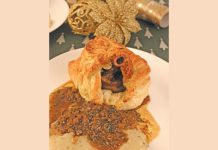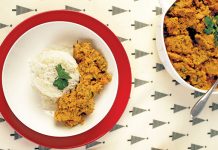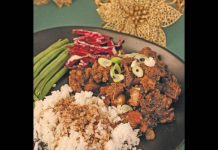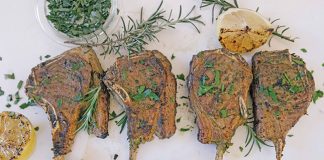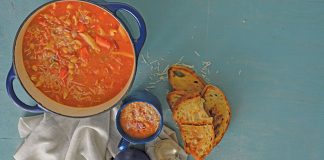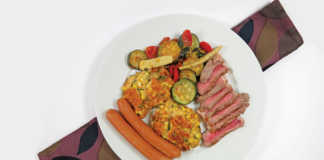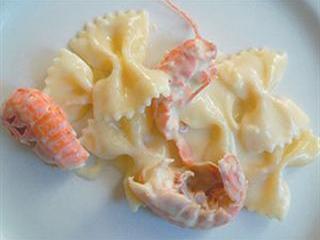
To make this meal for four you will need:
- 32 to 40 langoustines (you decide)
- 100g butter
- 2 tablespoons extra-virgin olive oil
- 4 cloves garlic
- Juice of half a lemon
- Salt and freshly ground black pepper to taste
- 500g butterfly pasta
For the roux:
- 70g butter
- ½ cup white flour
- 2½ cups chicken stock
- salt and freshly ground pepper to taste
First the bad news. This is a three-process meal. The good news is that each process is within the skill set of the beginner cook. We begin with the roux, which is a simple white sauce. However, keeping it lump-free is not simple, but with dedication, prayer, and a life of denial, it is possible. Just stay calm. The lumps will vanish.
Melt the butter in a frying pan over medium-low heat and as soon as it turns light brown, sprinkle flour in a little at a time. Stir constantly to avoid lumps.
As soon as all the flour has combined with the butter, add the chicken stock. And don’t even think of using a stock cube. Thaw some of the chicken stock you have previously stored in the freezer. Continue the cooking and stirring for 15 minutes to 20 minutes. Season to taste with salt and pepper, cover and remove from heat.
Bring 2l of lightly salted water to a rolling boil and cook the pasta for the time suggested on the packet.
Clean the langoustines by cutting through the carapace and flesh to remove the colon, also known by squeamish biology-hostile cooks as “the vein”. Believe me, this ain’t no vein. Heat the mixture of butter and olive oil in a frying pan, add the juice of half a lemon and swiftly stirfry the unpeeled langoustines for three minutes.
The peeled versus unpeeled debate continues in the noisier food blogs on the internet, but for this hack, the golden orange shells of the langoustines add not only to the general appearance, but also marginally but perceptibly to the flavour. Note that shellfish are very easy to overcook so watch the time carefully.
As soon as they are ready, lower the heat and pour in the cooked roux. Stir to generously coat all the langoustines. Add the cooked pasta, stir once again and serve at once after a light sprinkle of coarsely ground black pepper and salt if required.
A truly crisp, very cold Chenin Blanc hits the spot for many langoustine fans. This hack, whose very long belt is on the very last notch, prefers imported pilsener, chilled to the point of near-freezing.



